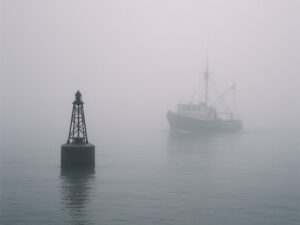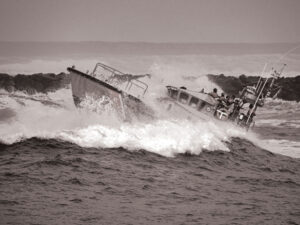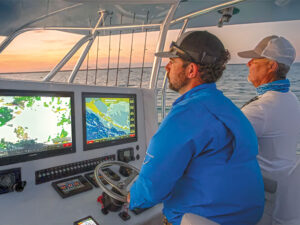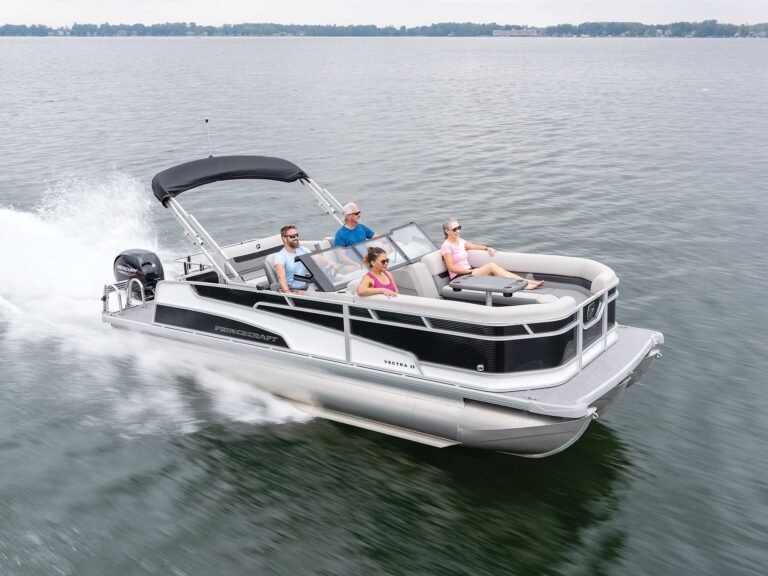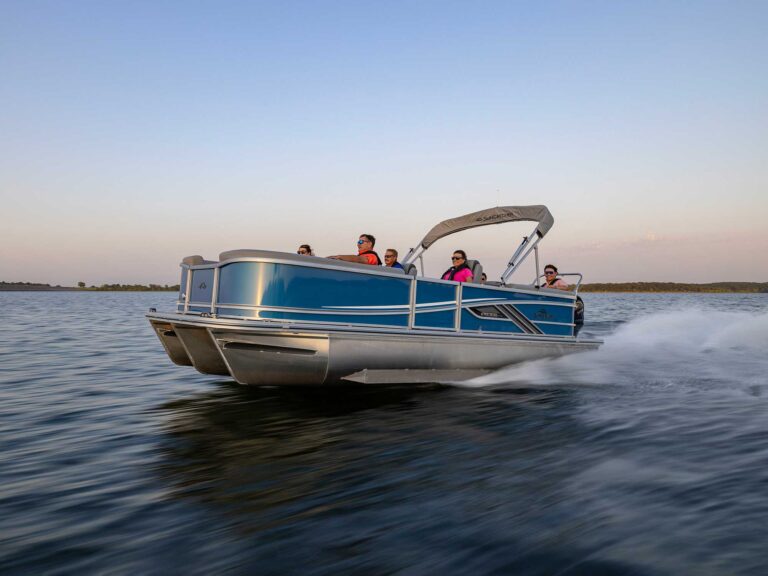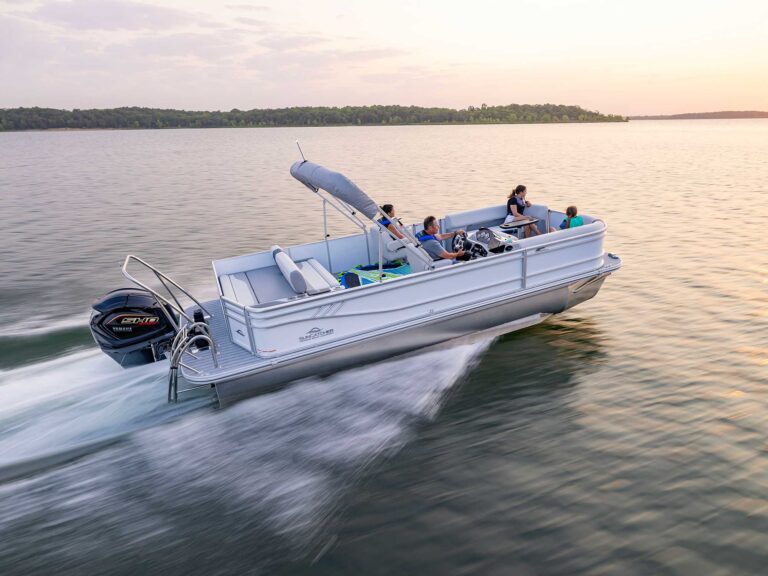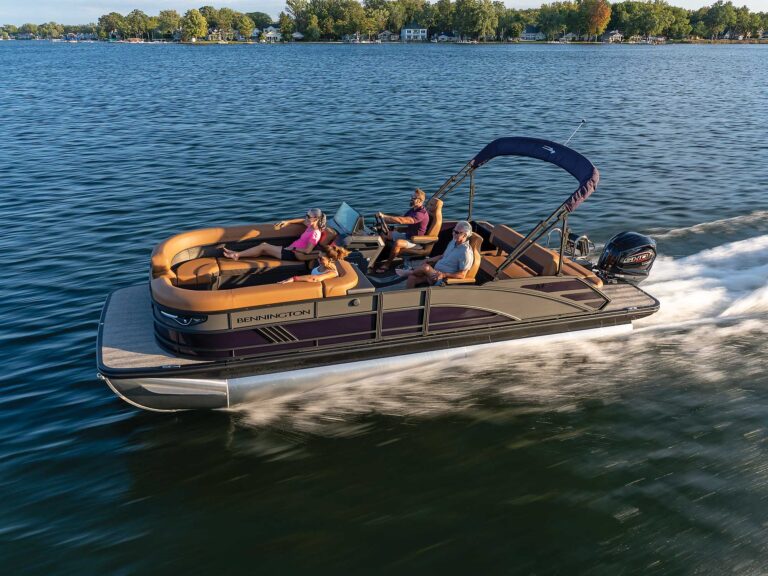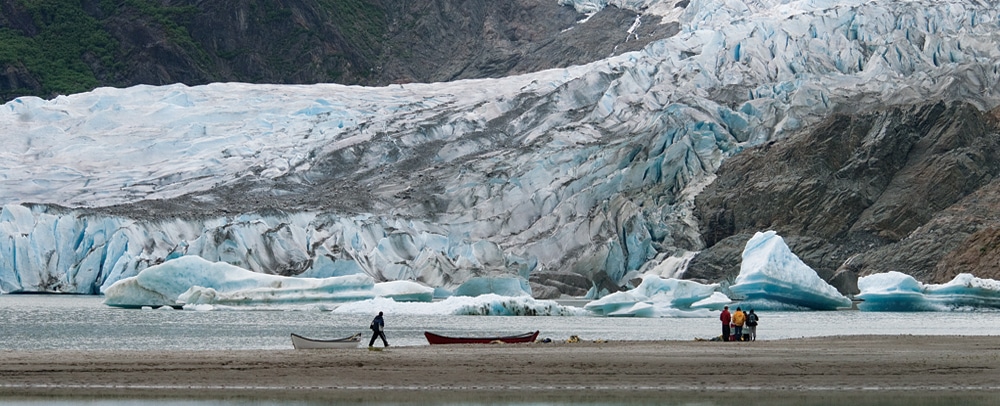
Cold-Water Safety
Maybe it’s the solitude of early-season boating that is so alluring. There is certainly a stark beauty to it. Trees are just beginning to bud, and blooming shrubs add to their vibrant colors. Often, wildlife encounters are more abundant as well, thanks to the relatively few boaters out enjoying the sometimes-frosty experience. But with that beauty comes added responsibility and the need to be prepared for unexpected hazards.
Take, for instance, an incident in Alaska, when three men decided to go duck hunting. The air temperature was 39 degrees; the water registered just 40. As they launched their small boat into a tidal marsh, the gusty wind began opposing the tide, creating a tight, heavy chop that started breaking over the bow. Within minutes the boat swamped and capsized, and the three friends found themselves in bone-chilling water.
“I believe it was the coldest I’ve ever been,” one of the hunters told the Juneau Empire. Luckily, the three had a few key factors in their favor. They were all wearing life jackets, they were able to climb on top of or cling to the capsized boat, and one of them used his cell phone, stored in a Ziploc bag, to call the Coast Guard station in Juneau. Their quick thinking and the Coasties’ fast response time turned this into a cold-weather emergency with a happy ending.
Unfortunately, emergencies don’t always end so well. Michael Folkerts, recreational-boating safety specialist for Coast Guard District 17 in Alaska, says many people just don’t understand the risks involved with boating in the cold. Alaska has the highest recreational-boater fatality rate in the country, and part of the problem stems from boaters getting into trouble in marginal weather. Thankfully, Folkerts and his colleagues have much hard-earned wisdom to share so that, wherever you live, you can prepare.

Before You Go
It’s understandable why boaters like to go out in the cold. “The fall, winter and early spring can be some of the most beautiful times to be on the water,” Folkerts says, “but the weather can change in an instant.” Therefore, you should take a few precautionary steps before you head out.
File a Float Plan; Follow It — “There’s nothing worse,” Folkerts says, “than getting a call from a significant other saying, ‘My husband was supposed to be back four hours ago.'” When asked where he was going, the wife doesn’t know because he didn’t tell her. Leave as detailed a plan as possible with your spouse, a relative or a friend and tell them you will check in when you get back to land. If they don’t hear from you, they’ll know to call for help and where to send the rescuers.
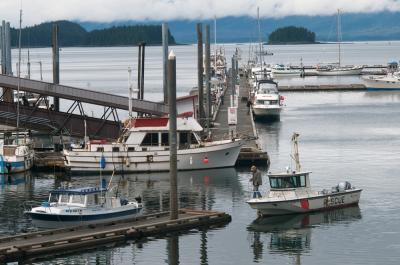
Dress For the Water, Not the Weather — One of the biggest mistakes people make is dressing for the air temperature. “Sometimes you get those 60-degree days but the water temperature is still in the 40s,” Folkerts says. Water can sap your body heat 25 times faster than air can, so protect yourself from possible immersion, no matter how warm it feels outside.
Cotton Kills — “Cotton is one of the worst things you can wear when it’s cold and damp,” says David Borg, Folkerts’ colleague and the boating safety analyst for District 17. Cotton absorbs water and reduces body temperature much more quickly than other materials. Wear water-resistant fabrics and layers that wick away moisture, and a waterproof outer layer.
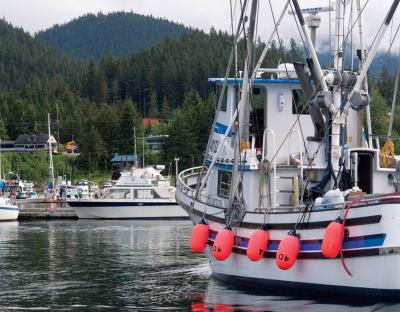
Fix It Now — Folkerts says his district gets a lot of calls in the early spring when boaters launch for the first time. “People want to get on the water and don’t do maintenance as they should,” he says. “The boat runs for a while and then quits.” Do all your spring commissioning work, and make the first run a short one close to the dock or launch ramp.
Prepare For the Worst — One could argue that a Ziploc bag saved the Alaskan duck hunters. Bring supplies to prepare for an emergency, such as blankets, food, water, warm clothes and communication and location devices, including a VHF radio, GPS and emergency positionindicating radio beacon (EPIRB) or personal locator beacon (PLB). Don’t rely on a cell phone, but if you bring it, keep it dry, and preprogram rescue numbers. Dialing 911 sends you to a land-based emergency system and could delay your rescue. The hunters knew to dial *CG, which in Alaska puts you in direct contact with the Coast Guard command center in Juneau. Find out what to dial in your area.
Have a Fire Drill — Where’s the ladder, the throwable life preserver, the ditch bag, the VHF radio? Go over the exact location of all key safety gear before you leave the dock. If you’re boating with a friend, discuss who’s going to do what if someone falls overboard, and how to make emergency calls.
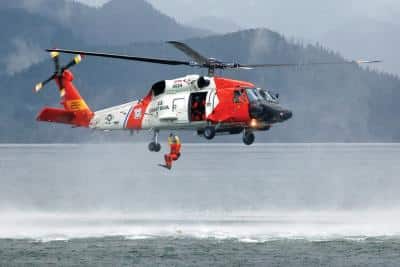
An Ounce of Prevention
The Coast Guard requires that everyone serving duty on a small boat wear a full drysuit if the water temperature dips below 50 degrees. No matter the weather, every Coastie on small-boat duty wears a search-and-rescue (SAR) vest, a life vest that holds a personal EPIRB, plus hand-held pyrotechnics (flares), a signal mirror, a whistle, a strobe light and a survival knife — all tethered to the vest. Whether you have all that gear or not, the No. 1 way to prevent disaster on the water is to wear a life jacket.
Life Jackets For All — “The very first thing you lose in cold water is the ability to swim and stay afloat,” Folkerts says. “Your life jacket is critical for keeping your head above water.” It can increase the odds of survival in cold water by hours. Wearing one should become second nature, like putting on a seat belt in a car.
One Hand For the Boat — When boating in cold weather, one thing you should keep tabs on is a loss of dexterity. When your fingers are exposed to cold air, they get stiff, and it’s harder to perform fine-motor tasks like tying a knot, opening a latch or pressing buttons on a cell phone, a radio or electronics. When your feet are cold, it’s harder to maintain balance, and bundling up can make you bulkier and less nimble than normal. When walking around on deck or along the rails, always have one hand on a grab rail for support.
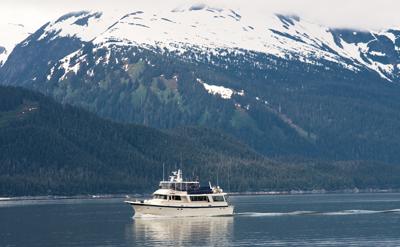
Kill Switches For Life — “Can you imagine the feeling of falling in the water and watching your boat drive away from you?” Folkerts asks. For boaters heading out alone, clipping on the kill switch is critical. Even when boating with a crew, the driver should always wear the kill switch so the boat stops instantly if anything happens to him.
Risk Management — “A lot of folks we rescue say they knew they shouldn’t have gone out,” Folkerts says. “I imagine the ones we couldn’t had the same thought.” As Folkerts and Borg point out, too many people equate boating with driving a car, but if something goes wrong, you can’t just pull over. Monitor the weather at all times. At the first hint of bad conditions, start evaluating whether it’s time to return to the dock. Know your boat’s capabilities and what types of sea conditions it can handle. “Sometimes,” Borg adds, “it’s better to just go home.”
Then again, with proper monitoring, careful planning and a sound understanding of the potential dangers of boating in cold-water conditions, you can safely enjoy the solitude of the great outdoors during these times of the year. After all, in many areas of the country, there’s simply no better time to go.
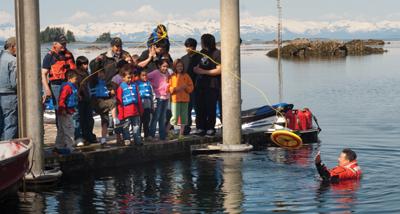
The Clock is Ticking
When immersed in water 50 degrees or cooler, it takes around 15 to 20 minutes for your core temperature — the temperature of your internal organs — to start dropping. Your body tries to protect itself by flowing blood to the core, causing numbness in your hands and feet. Your blood thickens as it cools, putting stress on your heart. You are now experiencing hypothermia. When your core temperature drops below 90 degrees you will lose consciousness. Obviously, the sooner help arrives the better.
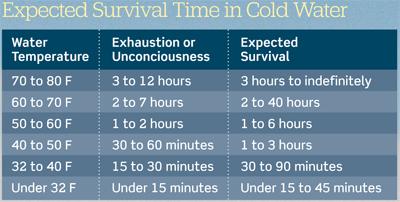
Here’s what happens to your body in 50-degree water:
0 to 5 Seconds: Gasp reflex. You’ll immediately suck in air or, if your head is submerged, two to three quarts of water.
3 to 5 Minutes: You start to hyperventilate, and your heart rate accelerates. Panic attacks set in.
3 to 30 Minutes: You lose feeling and dexterity in your extremities, hampering your ability to swim.
10 to 30 Minutes: Rising blood pressure causes your kidneys to purge fluids; you have to urinate, which promotes dehydration.
15 to 20 Minutes: Your core temperature starts to cool.
30 Minutes: True hypothermia sets in. You become disoriented and start to hallucinate.
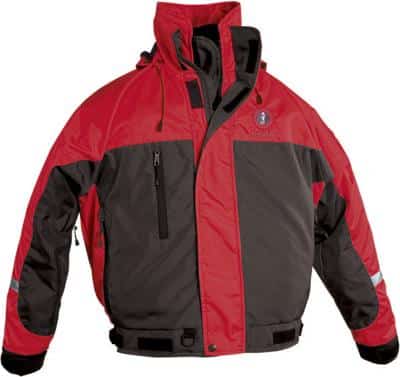
Popsicle Gear: Five to Keep You Alive
If you’re going to head out into cold water, here are a few items that could save your life. Bring these items aboard, or wear them, and you can enjoy the beauty of a chilly day on the water with a little more peace of mind.
Mustang Classic Bomber Jacket — This proven cold-weather stalwart works as a winter jacket on board, keeping you protected from the elements. Should you fall in, its closed-cell foam insulation protects from hypothermia and will help keep you afloat. $280; mustangsurvival.com
Stearns SAR Flotation Life Vest — Keeps your head out of the cold water and has SOLAS reflective tape and pockets for storing emergency items like flares, a handheld VHF, a whistle and more. $80; stearnsflotation.com
ACR Aqualink PLB 350C — A personal locator beacon that you register and wear on yourself. It will send your exact GPS coordinates for rescue and works via satellite, giving it far greater range than a handheld VHF radio. $430; acrelectronics.com
Emergency Space Blankets — They’re cheap, lightweight and store out of the way. If you have someone on board suffering from hypothermia symptoms, lay them down and wrap them in a space blanket, foil side in. $5; cabelas.com
Lowrance LHR-80 Waterproof VHF/GPS — It floats, it’s waterproof, and it has a built-in GPS so you can relay your exact coordinates when you radio for help. $200; lowrance.com

